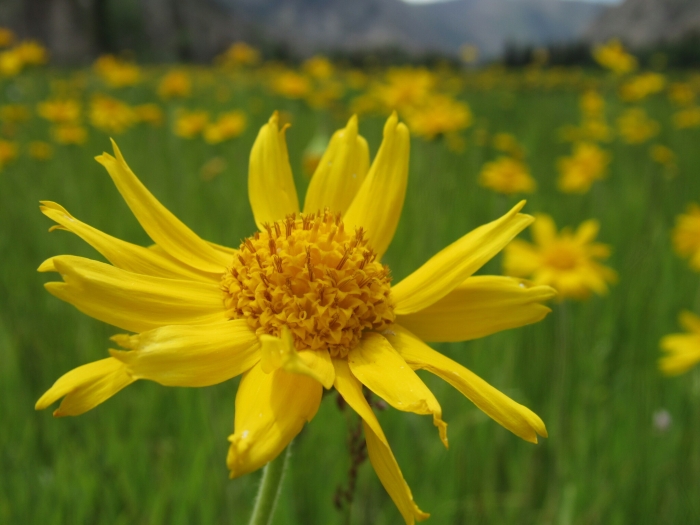Foothill Arnica
(Arnica fulgens)
Foothill Arnica (Arnica fulgens)
/
/

© Anders Hastings
CC BY 4.0
Image By:
© Anders Hastings
Recorded By:
Copyright:
CC BY 4.0
Copyright Notice:
Photo by: © Anders Hastings | License Type: CC BY 4.0 | License URL: http://creativecommons.org/licenses/by/4.0/ | Uploader: andershastings | Publisher: iNaturalist |

























Estimated Native Range
Summary
Arnica fulgens, commonly known as foothill arnica or hillside arnica, is a perennial herb native to montane and subalpine meadows, grassy slopes, and open woodlands of western North America, from British Columbia to Saskatchewan and south to California and New Mexico. It typically grows to heights between 4-24 inches (10-61 cm) and features hairy stems with lance-shaped leaves. The plant is characterized by its inflorescence, which usually presents one or two daisy-like flower heads with bright golden disc florets surrounded by golden ray florets. Foothill arnica blooms from May to July, displaying its vibrant flowers that are highly attractive to pollinators such as bees and butterflies.
Foothill arnica is valued for its medicinal properties, as it has been traditionally used in herbal remedies for its anti-inflammatory effects. It is also appreciated for its ornamental qualities in wildflower gardens and naturalized areas. This plant prefers well-drained soils and can tolerate a range of soil types, from clay to loam. It thrives in full sun to part shade and requires moderate water, especially in well-drained conditions. While generally low-maintenance, Arnica fulgens can be susceptible to root rot if overwatered or planted in poorly drained soils. It is not known for being invasive and is considered a beneficial addition to native plant gardens.CC BY-SA 4.0
Foothill arnica is valued for its medicinal properties, as it has been traditionally used in herbal remedies for its anti-inflammatory effects. It is also appreciated for its ornamental qualities in wildflower gardens and naturalized areas. This plant prefers well-drained soils and can tolerate a range of soil types, from clay to loam. It thrives in full sun to part shade and requires moderate water, especially in well-drained conditions. While generally low-maintenance, Arnica fulgens can be susceptible to root rot if overwatered or planted in poorly drained soils. It is not known for being invasive and is considered a beneficial addition to native plant gardens.CC BY-SA 4.0
Plant Description
- Plant Type: Herb
- Height: 0.8-1.5 feet
- Width: 0.5-1 feet
- Growth Rate: Moderate
- Flower Color: Yellow
- Flowering Season: Spring, Summer
- Leaf Retention: Deciduous
Growth Requirements
- Sun: Part Shade
- Water: Medium
- Drainage: Medium
Common Uses
Bee Garden, Butterfly Garden, Low Maintenance
Natural Habitat
Montane and subalpine meadows, grassy slopes, and open woodlands
Other Names
Common Names: Hillside Arnica, Shining Leopardbane, Orange Arnica, Shining Arnica
Scientific Names: , Arnica fulgens, Arnica fulgens var. fulgens, Arnica monocephala, Arnica montana var. fulgens, Arnica pedunculata, Arnica pedunculata f. monocephala, Arnica pedunculata f. pedunculata, Arnica pedunculata var. monocephala, Arnica pedunculata var. pedunculata
GBIF Accepted Name: